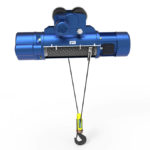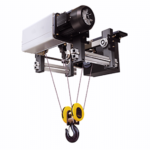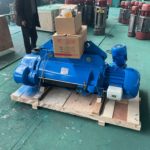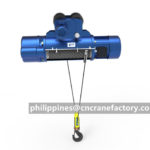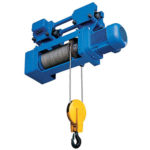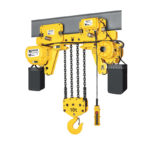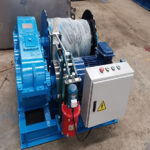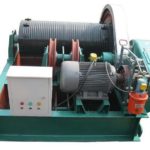We sent 10t NR Electric Hoist To Iran.
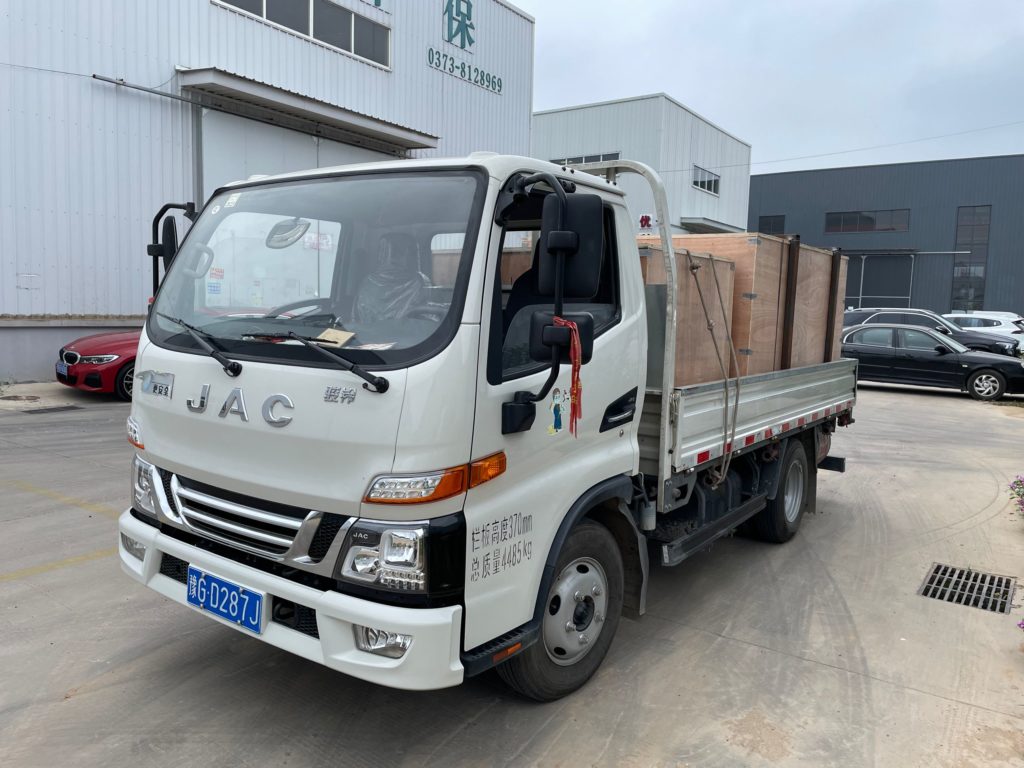
Our NR series Wire Rope Hoist is a trustworthy partner for any general material handling needs combine with overhead crane bridges. Thanks to modularized design philosophy apply to this hoist, enable it has a slim hoist layout and strong adaptivity to fit all kinds of I-beam, single bridge crane or configure with moving trolley for double bridge cranes.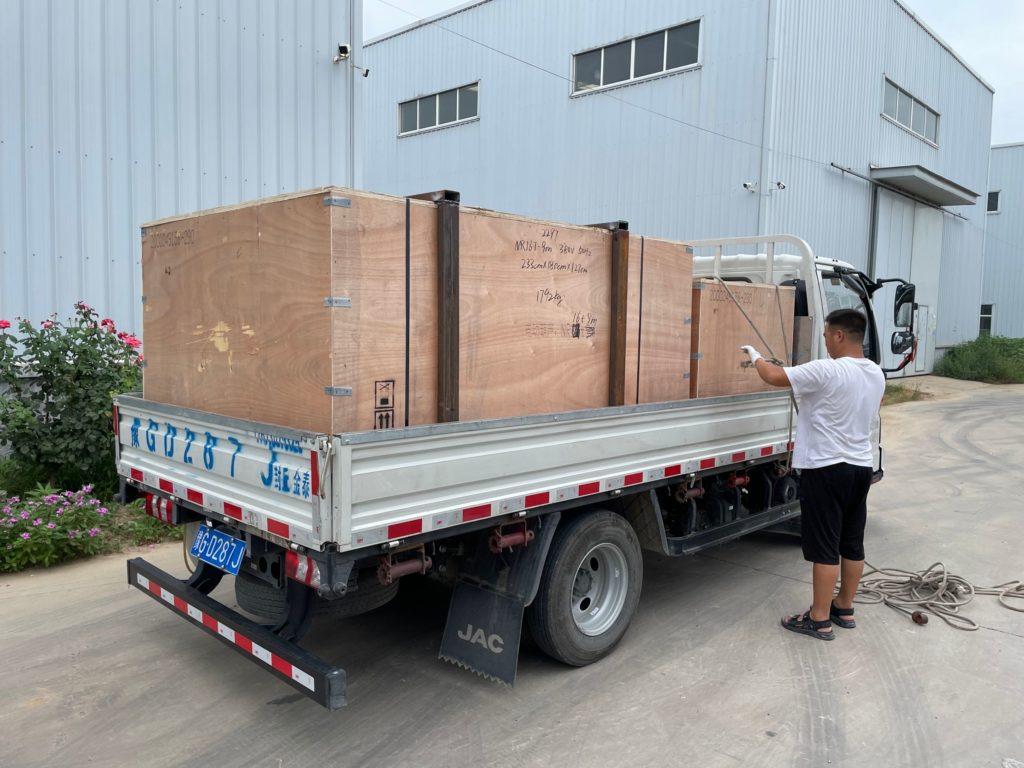
NR hoist delivers reliable performance whether handling task calls for light or heavy duty requirement. NR hoist introduces advanced technology to keep hoist consistently perform at its best level in terms of stay high-efficient, it also outfits various intelligent electrical control units to assure operation safe as well as maintain hoist extended service life.
When many customers order electric hoists, the sales staff will ask parameters such as tonnage, lifting height, speed, etc., one of which is to ask for wire rope or chain, and many customers do not know the difference between the two.
The difference between chain electric hoist and wire rope electric hoist
The difference between chain electric hoist and wire rope electric hoist needs to be analyzed in terms of their volume, running distance, accuracy, transmission power structure, and different lifting heights.
Wire rope electric hoist and chain electric hoist are basically the same in structure. All belong to the electric hoist, which is a lifting equipment combined with lifting and walking. The lifting part is composed of three parts.
working environment:
Electric chain hoists are mainly used in various factories, warehouses, wind power generation, logistics, docks, construction and other industries for lifting or loading and unloading goods.
Wire rope electric hoists are mainly used for the installation and movement of various large and medium-sized concrete, steel structures and mechanical equipment. Build engineering machinery and equipment.
Motor:
Wire rope electric hoist, using a conical rotor motor motor
The electric Chain Hoist uses a cylindrical rotor motor, and the braking principle of the side magnetic brake is the same. Under the condition of power on, the brake disc is separated from the end cover. .
In addition, among the two-speed electric hoists, the wire rope electric hoist uses two lifting motors, while the chain electric hoist uses the same motor with double windings.
Transmission power structure:
The wire rope electric hoist uses a drum, and the wire rope is wound in the drum groove in an orderly manner through a rope guide.
The electric chain hoist uses a sprocket to guide the chain into the chain belt.
Different volumes:
The take-up and winding device of the chain hoist is a ring chain, the rotation of the sprocket is the key to lifting, and the winding direction of the chain on the sprocket can be set arbitrarily, with high flexibility, reasonable structure and small volume.
For wire rope hoists, the winding device is a wire rope, and the lifting depends on the rotation of the reel. To rise to the maximum height, the wire rope needs to be wound on the reel for at least 3 turns. This just causes reel length to increase, and height increases, and reel lengthens, and the volume of equipment just will increase.
Range of use:
Wire rope electric hoists are often used in single-girder bridge cranes and single-girder gantry cranes, especially for large-tonnage cranes above 5t, and wire rope electric hoists have an absolute advantage.
Electric chain hoists are often used in cranes below 5t, especially in light and small lifting equipment such as assembly lines, wind power projects, cantilever cranes and KBK.
Different lifetimes:
The wire ropes of the wire rope hoist are relatively thin. If the equipment is often operated under the conditions of humidity, high temperature, acid and alkali fog, the wire ropes are easy to break.
The chain section of the chain hoist is relatively large, and the core material is generally resistant to high temperature and oxidation, so it will not change greatly in harsh environments, so it has a longer life.
Lifting heights vary:
The wire rope electric hoist lifts heavy objects by the elastic deformation of the wire rope wound on the reel. The smaller the diameter of the reel, the greater the change of the wire rope type, because one side bears pressure and the other side bears tension. In order to make the two This force does not exceed the specified, the diameter of the reel needs to be increased.
The chain hoist is hinged by the chain links, and the chain mainly bears the tension. In order to reduce the extrusion strength of the contact surface between the chain links and between the chain ring and the sprocket socket, the sprocket will be made into a nest shape.
It can be seen that for the two types of equipment of the same specification, the former drum diameter is larger than the latter sprocket diameter, so the lifting height of the former is smaller than that of the latter for tracks of the same height.
Running distances vary:
The axis of the wire rope hoist is parallel to the centerline of its trolley track.
The center line of the chain hoist and the running track can be installed at 90 degrees.
Therefore, under the same conditions and track length, the latter has a longer running distance.
The mechanics are different:
During the lifting process of the wire rope electric hoist, the tension and pressure on both sides are balanced;
The chain of the chain hoist is wound on the sprocket and the direction can be set arbitrarily, which has high flexibility.
The ability to resist cable pull is different:
The electric chain hoist is hinged with the running trolley, and there is a large gap between its lifting hole and the bearing beam of the running trolley, and the former can rotate around the latter, so the equipment swings in the direction of the force when the cable pulls, making the ring The center line of the chain along the tangent direction of the pitch circle of the sprocket can basically be kept perpendicular to the axis of the sprocket, so it can work normally even if it is inclined;
There is a rigid connection between the wire rope hoist and the running trolley, so the wire guide is easily damaged when the oblique tension is too large. If the operation is not stopped in time at this time, it may cause the click to break and cause the entire equipment to be damaged.
The winding device is different:
The winding device of the wire rope hoist is a wire rope, which is rigid and prone to trough phenomenon under no-load conditions. When lifting a small weight or transporting a heavy object to a support, it is more likely to have a rope problem;
The winding device of the chain hoist is a chain, because the winding method is hinged, there is no rigidity, and there is no problem of messy ropes.
